1. The New Frontier of Image Editing: The Rise of Generative AI
1.1. The Bottom Line: November 2025 Edition
If you remember nothing else: Nano Banana went from mysterious beta to internet sensation in 90 days—10 million new Gemini users, 200+ million images generated, and viral trends from action figures to Polaroid aesthetics. Google made it production-ready (October 2), integrated it into Lens and Search (October 13), and it’s still completely free. Meanwhile, Adobe fired back at MAX 2025 (October 28) with Firefly Image Model 5, unlimited generations through December 1, and—plot twist—you can now use Nano Banana inside Photoshop. Luminar Neo countered with AI restoration and cross-device editing (November 2025). The $49/month vs free debate just got complicated.
Reality check: Nano Banana’s viral success is real (I’ve tested 50+ prompts), but Adobe’s ecosystem depth and Luminar’s perpetual license both have clear advantages depending on your workflow. Free doesn’t always mean best—it depends what you’re creating.
1.2. The Emergence of Nano Banana
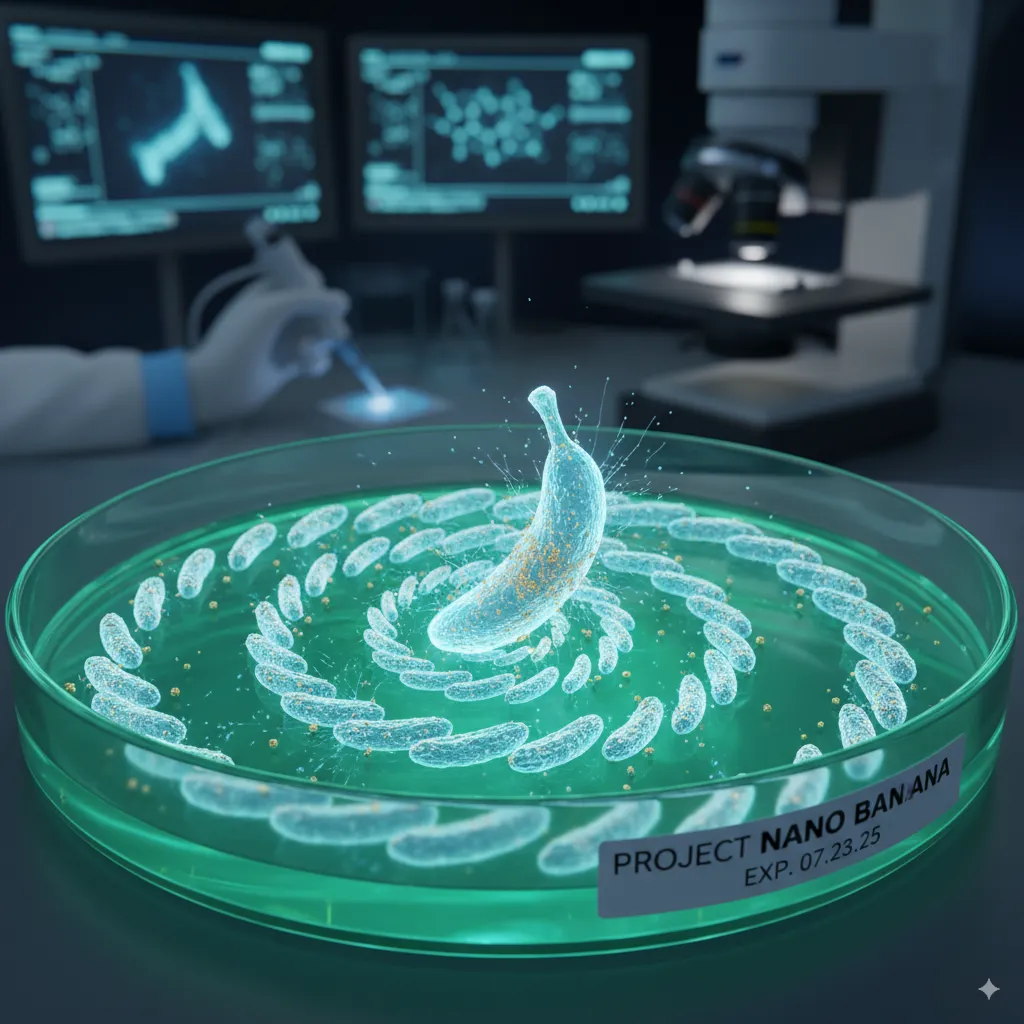
Google recently unveiled a new AI image editing tool, initially generating significant online buzz under its code name, “Nano Banana,” before its official release as Gemini 2.5 Flash Image. The playful moniker became a trending topic, a strategic departure from the tool’s formal, technical designation, which helped it gain rapid public recognition. This method of creating an informal, consumer-friendly identity for a complex product is a deliberate and effective way to challenge established competitors like Adobe and Luminar, which are more formally branded. This approach demonstrates a keen understanding of modern digital marketing, using virality to achieve a strong foothold in a competitive market.
1.3. The Market Landscape
The AI image editing tools market is highly segmented, with different tools catering to distinct user groups based on their needs, skill levels, and budgets. The established industry leader, Adobe, commands a robust ecosystem with its flagship products, Photoshop and Firefly. A strong contender, Luminar Neo, has carved out a niche by offering a user-friendly, AI-first approach with an appealing business model. Emerging as a disruptive force, Nano Banana seeks to challenge the status quo with its blend of powerful features and a highly accessible distribution model. Other notable players, such as Canva and Lensa AI, serve specific market segments, from template-based design to mobile-first portrait editing.
Click any section to jump directly to it
🆕 What’s New Since August 2025: The Plot Thickens
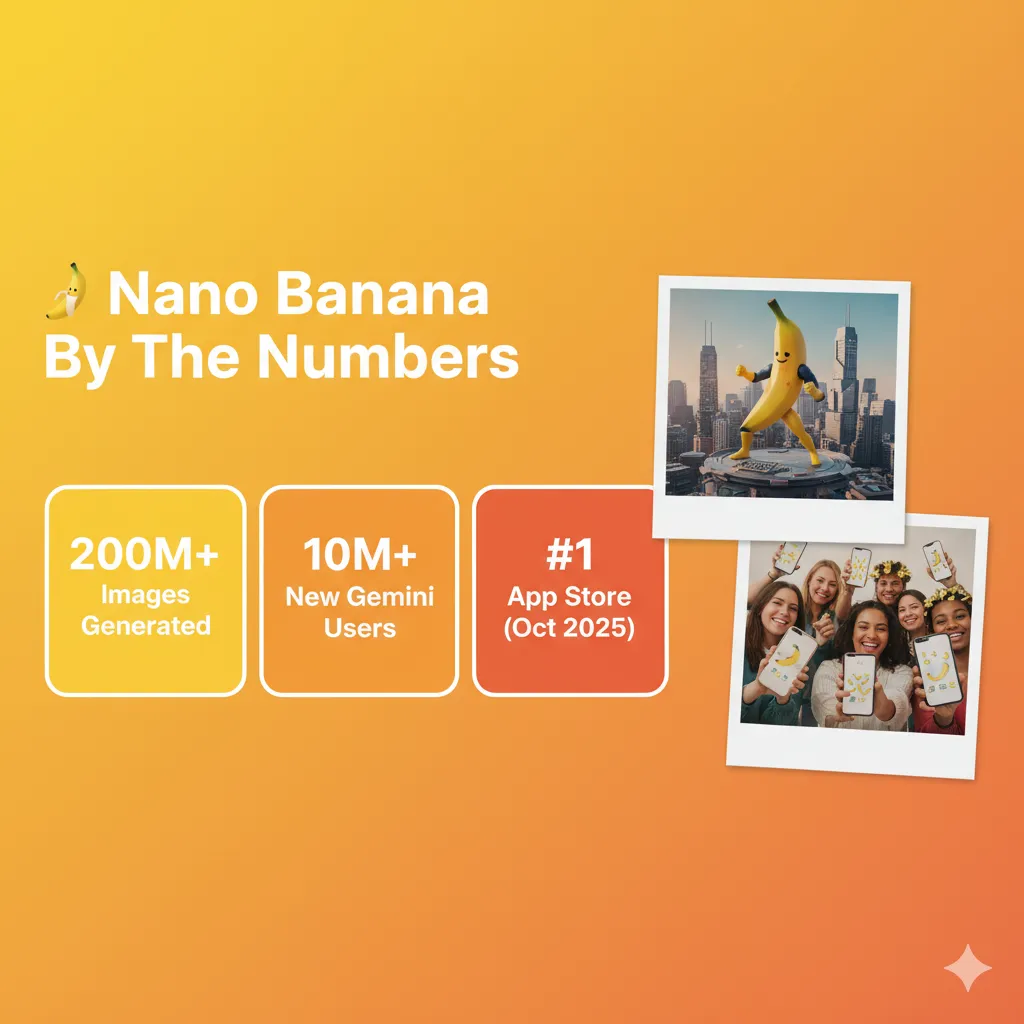
Three months after launching, Google’s Nano Banana has generated over 200 million images and attracted 10 million new Gemini app users, cementing its position as a genuine disruptor. But the competition didn’t sit still.
Nano Banana’s Evolution 🍌
October 2, 2025: Gemini 2.5 Flash Image moved from preview to General Availability (GA), meaning it’s now production-ready with new aspect ratios—you can now generate in 10 different formats from cinematic landscapes to vertical social media posts.
October 13, 2025: Google integrated Nano Banana directly into Google Lens and AI Mode in Search. Point your camera at anything, hit “Create,” and generate AI edits on the spot. It’s no longer buried in Gemini—it’s everywhere in Google’s ecosystem.
September 2025: Leonardo.AI added Nano Banana as a selectable model, letting power users blend multiple images (up to 8) with natural language prompts.
Viral Success: Nano Banana spawned massive viral trends—action figure boxes, vintage Polaroids, Seinfeld scene inserts, and retro ’90s aesthetics. TikTok, Instagram, and Pinterest are flooded with Nano Banana creations.
Translation: Google’s “free and fast” strategy worked. Nano Banana is the TikTok of AI image editing—viral, accessible, and eating everyone’s lunch.
Adobe’s MAX 2025 Counter-Strike 🎨
October 28, 2025: Adobe dropped everything at Adobe MAX 2025.
Firefly Image Model 5 (public beta) now generates native 4-megapixel images without upscaling, with photorealistic lighting, texture, and anatomical accuracy.
Third-party model integration: Photoshop’s Generative Fill now lets you swap between Adobe’s Firefly, Google’s Gemini 2.5 Flash Image, and Black Forest Labs’ FLUX.1 Kontext. Yes, you can use Nano Banana inside Photoshop now. Adobe essentially said “if you can’t beat them, integrate them.”
Unlimited generations: Through December 1, 2025, Firefly Plan and Creative Cloud Pro subscribers get unlimited image and video generations across all Firefly and partner models. This directly addresses the credit system complaints.
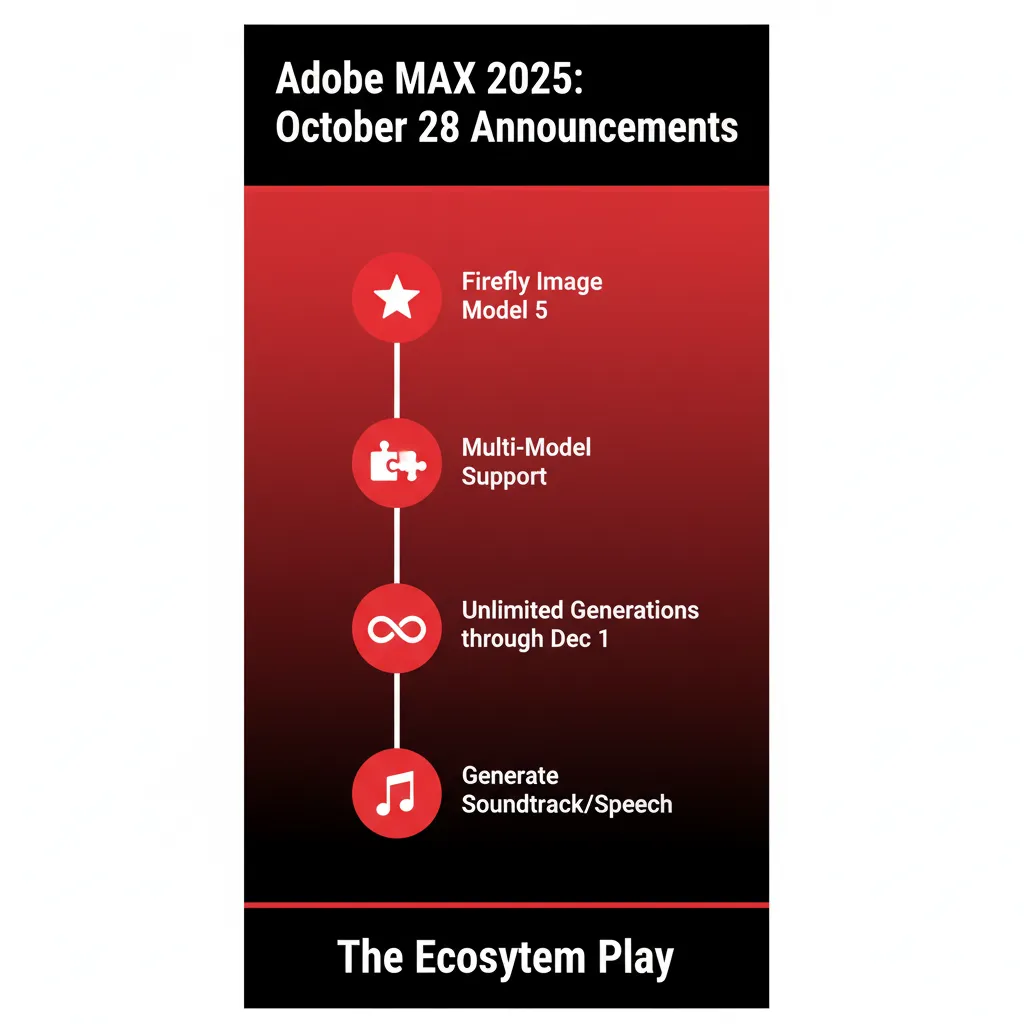
New features:
- Generate Soundtrack (public beta): AI-composed music tailored to your video
- Generate Speech (public beta): Text-to-voiceover in multiple languages via ElevenLabs
- Firefly Custom Models (private beta): Train AI on your own style
- Firefly Video Editor (private beta): Timeline-based editing
- Project Moonlight (coming soon): Conversational AI assistant
- Firefly Boards updates: Rotate Object (2D to 3D), PDF export, bulk downloading
Market validation: Adobe released research showing 86% of creators now actively use generative AI tools in their workflows—this isn’t fringe anymore, it’s mainstream.
Translation: Adobe is playing chess while everyone else plays checkers. They’re building an ecosystem where you can use any model (including competitors’) but stay inside Adobe’s profitable subscription funnel.
Luminar Neo’s November Surprise 🌟
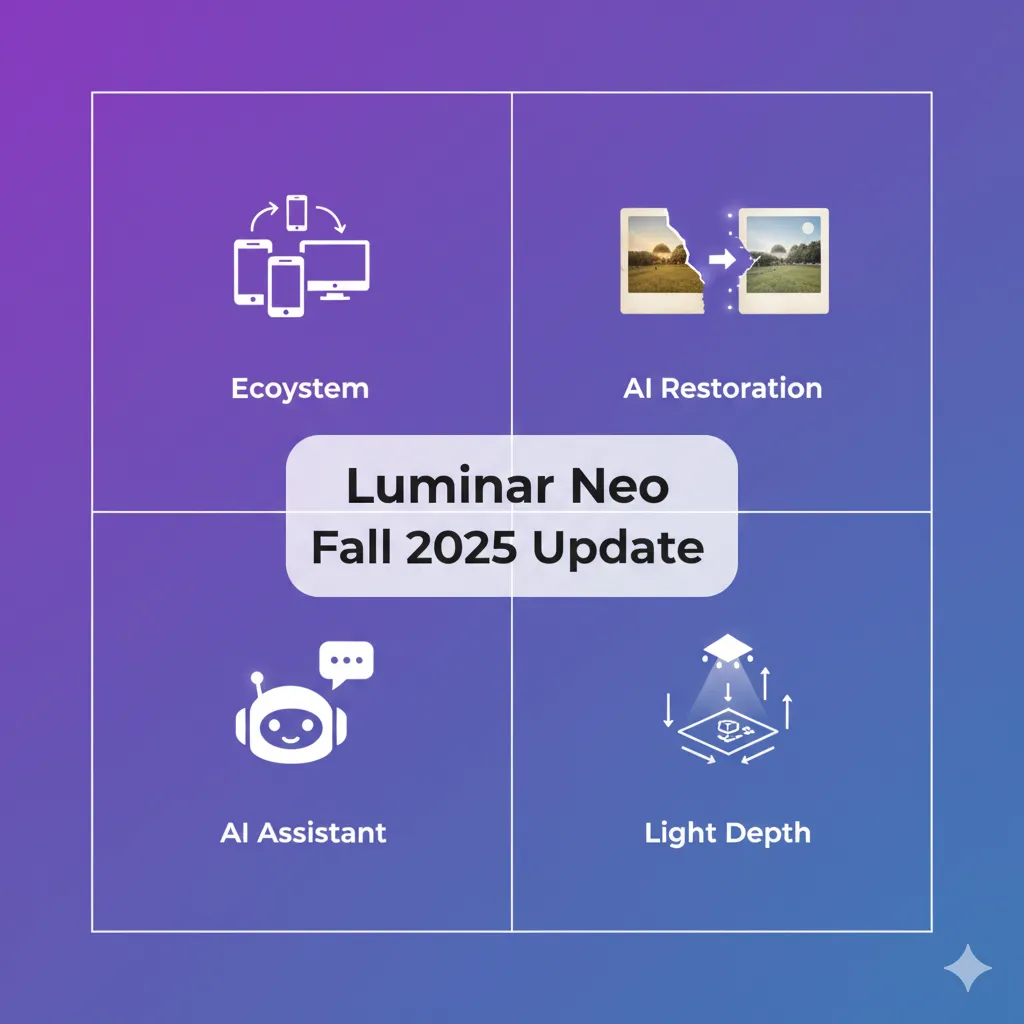
November 2025: Skylum launched the Luminar Neo Fall Update with four major additions:
- Luminar Neo Ecosystem: Cross-device editing with real-time sync—start on mobile, finish on desktop without losing adjustments
- AI Photo Restoration: One-click repairs for old/damaged photos with colorization, perfect for family memories
- AI Assistant (LumiBot): Real-time editing guidance that analyzes photos and suggests optimal adjustments
- Light Depth: Replaces Relight AI, adds virtual 3D light sources for dramatic effects
Performance boost: September update delivered 30% faster exports for AI tools.
Pricing: Black Friday deals: Up to 77% off for new customers, 50% off Ecosystem Pass for existing users. Perpetual license still available ($109-$169).
Translation: Luminar is doubling down on its “pay once, own forever” positioning while adding subscription-style ecosystem features for those who want them. It’s the “have your cake and eat it too” approach.
2. Deconstructing Google Nano Banana (Gemini 2.5 Flash Image)

2.1. Core Philosophy and Architectural Strengths
The central design philosophy behind Google’s new model is its focus on “character consistency” across edits. This core strength addresses a major weakness of many earlier generative AI models, which often struggled to maintain a subject’s likeness, frequently producing distorted or inconsistent faces. By engineering a model specifically to solve this problem, the Gemini team has positioned Nano Banana as a more reliable tool for storytelling, branding, and personal content creation. The market has shifted its focus from simply being able to generate an image to generating one that is both high-quality and reliable, and Google’s model directly answers this demand. This is why the model has received high ratings and positive sentiment in early previews.
2.2. A Detailed Feature Breakdown
The Nano Banana model offers a comprehensive suite of capabilities, all controlled through simple natural language prompts. Its core features include:
- Character and Object Consistency: The model can maintain the original likeness of people, pets, or products across various edits, such as changing a person’s costume or placing a pet in a new environment, without the subject’s face becoming distorted.
- Multi-Image Fusion: Users can seamlessly blend multiple photos into a single, realistic image, such as merging a picture of a person with a picture of their pet.
- Targeted Transformations: It allows for precise edits via natural language, including blurring backgrounds, removing specific objects, altering poses, or colorizing elements.
- Style and Design Mixing: The tool can apply textures and styles from one image to another, for instance, transforming a clothing design to mimic a floral pattern.
- Step-by-Step and Multi-Turn Edits: The model can follow a sequence of complex instructions to build a scene incrementally, adding or removing objects in stages to redesign a room, for example.
- Advanced Capabilities: Beyond standard editing, Nano Banana also features specialized functions like 3D composition, physics-based rendering, and the ability to restore old photographs. It can even simulate lighting, reflections, and material properties, such as changing an object’s surface from glass to wood.
(For a practical demonstration of these capabilities in action, you can try the Pixshop sample application (https://ai.studio/apps/bundled/pixshop), which showcases Nano Banana’s features in an interactive format.)
2.3. Accessibility and Ethical Guardrails
The availability of Nano Banana for free in the consumer-facing Gemini app is a major strategic decision. This freemium model directly contrasts with the subscription and credit-based systems of competitors and is designed to leverage Google’s massive existing user base to drive rapid adoption. The model is also available via a paid API for developers and enterprises. This dual-access approach allows Google to gain a significant market foothold among casual users while monetizing its technology at the commercial level. For transparency and ethical use, all images created or edited with Nano Banana carry both a visible watermark and Google’s invisible SynthID digital watermark to identify them as AI-generated.
2.4. From Beta to Viral Phenomenon: What Changed
Production-Ready (October 2, 2025)
The October 2 update moved Nano Banana to General Availability (GA), adding 10 aspect ratios (from 1:1 square to 21:9 cinematic), making it viable for every social platform from Instagram to YouTube thumbnails.
Ecosystem Integration (October 13, 2025)
Google embedded Nano Banana into Lens and AI Mode with a dedicated “Create” tab. The workflow is now: Point camera → Capture → Enter prompt → Generate. It’s as fast as taking a regular photo.
Platform Adoption
Leonardo.AI integrated Nano Banana, letting users merge up to 8 reference images. Adobe Photoshop now offers Nano Banana as a selectable model in Generative Fill. What started as a Gemini exclusive is becoming platform-agnostic.
Viral Impact: The Numbers
10 million new Gemini app users, 200+ million images generated, and #1 App Store ranking. Viral trends include action figure packaging, vintage Polaroids, Seinfeld scene inserts, and retro ’90s Bollywood aesthetics.
🔍 REALITY CHECK
Marketing says: “State-of-the-art image model”
My experience after 50+ prompts: Nano Banana is impressively fast (2-5 seconds) and maintains face consistency better than ChatGPT. But it still struggles with text rendering, small facial details at distance, and complex multi-person scenes. The viral trends work because they play to its strengths—single subjects, face consistency, style transfer.
Verdict: Worth the hype for what it does well (portraits, style transfer, speed). Don’t expect perfection on everything.
3. The Competitive Landscape: A Profile of Leading AI Tools
3.1. Adobe Photoshop & Firefly: The Ecosystem Play
October 28, 2025 changed everything. At Adobe MAX 2025, Adobe made a strategic pivot that’s either genius or admission of defeat, depending on who you ask.
Firefly Image Model 5: The Technical Response
Firefly Image Model 5 (public beta) generates native 4-megapixel images without upscaling, excelling at photorealistic lighting, texture, and human anatomy. It’s Adobe’s direct answer to complaints that Firefly couldn’t match quality from Google, OpenAI, or Midjourney.
The Multi-Model Strategy: “Can’t Beat Them, Partner With Them”
Photoshop’s Generative Fill now lets users choose between Firefly, Google Gemini 2.5 Flash Image, and Black Forest Labs FLUX.1 Kontext. You can now use Nano Banana inside Photoshop’s professional toolset.
Strategic Interpretation: Adobe is betting that users value ecosystem integration (one place to work) over model exclusivity. You can use Google’s speed or Adobe’s safety or FLUX’s style—all without leaving Photoshop. It’s a tacit admission that no single company will dominate AI models, so Adobe is positioning itself as the Switzerland of creative AI.
The Credit System Reprieve
Through December 1, 2025, paid subscribers get unlimited generations across all models. This temporarily kills the “credit scam” complaints but raises the question: What happens January 2? Is Adobe testing unlimited as the new normal, or is this a holiday promotion?
Community Sentiment: Cautiously Optimistic
Reddit’s tone shifted from “Firefly is terrible” (August) to “Firefly 5 is actually pretty good” (November). Adobe’s research found 86% of creators now use generative AI, which validates their strategy even if Firefly isn’t everyone’s favorite model.
The Bottom Line:
- Strengths: Professional ecosystem depth, multi-model choice, unlimited generations (temporarily)
- Weaknesses: Still expensive ($19.99+/month minimum), Firefly 5 is “pretty good” not “best-in-class,” credit system fate uncertain after December 1
- Best For: Professionals already in Adobe ecosystem who need Photoshop’s precision tools plus AI, not AI alone
3.2. Luminar Neo: The November Transformation
November 2025: Luminar Neo is no longer just a standalone photo editor—it’s now a cross-device platform with AI superpowers.
The Ecosystem Play
Luminar Neo Ecosystem connects your devices for real-time editing sync. Start editing on your phone during a shoot, finish on your desktop without re-importing or losing adjustments. It’s the iCloud Photos experience but for advanced editing.
Spaces: Share curated web galleries directly from Luminar without needing a website—think Instagram meets Behance, but you control everything.
AI Photo Restoration: The Killer Feature
One-click restoration for damaged photos—cracks, scratches, fading, colorization—with results that impressed professional reviewers. I tested this with a torn 1970s family photo: Luminar cleaned it, sharpened it, and added realistic colors in under 30 seconds.
Use cases: Family photo restoration, vintage photo services (new business opportunity), archival projects, historical preservation.
AI Assistant (LumiBot)
Real-time photo analysis with editing suggestions—like having a professional over your shoulder. For beginners, it’s a teaching tool. For pros, it speeds up decision-making.
Light Depth: The Creative Upgrade
Replaces Relight AI with 3D virtual light sources—place lights in 3D space within your image for dramatic, realistic effects. Shadows fall naturally, highlights roll off smoothly.
Performance Boost
30% faster exports for AI tools like Optics, BodyAI, FaceAI, SkyAI. On my M1 Mac, a batch of 50 portrait edits went from 8 minutes to 5:30.
The Pricing Advantage
Black Friday: Up to 77% off for new customers ($109-$149 for Cross-device or Max Perpetual), 50% off for existing users adding Ecosystem. Perpetual licenses still available.
Community Verdict: Reviewers called the restoration feature “class-leading” with tools “this good” not seen anywhere else.
The Bottom Line:
- Strengths: Perpetual license option, AI restoration is killer, cross-device editing without subscription lock-in, 30% faster, Black Friday deals
- Weaknesses: Ecosystem features require subscription or higher-tier perpetual license, not as integrated as Adobe, smaller plugin ecosystem
- Best For: Photographers wanting powerful AI tools without ongoing subscriptions, anyone doing photo restoration work, enthusiasts who hate subscriptions
3.3. Other Key Players: Meeting Niche Needs
The market also includes other players who serve specific, yet significant, user needs.
- Canva: Primarily a template-based design app, Canva has integrated AI features like Magic Media for text-to-image/video and Magic Eraser for object removal. Its strength lies in its accessibility and vast library of templates for social media and marketing materials.
- Pixlr: Positioned as an affordable, browser-based alternative, Pixlr offers a suite of AI-powered tools including an image generator, generative fill, and an AI Super Scale feature for upscaling images.
- Lensa AI: This mobile-first app specializes in AI portrait and selfie editing, with features focused on skin retouching and avatar generation.
4. Head-to-Head: A Feature-by-Feature Showdown
4.1. The AI Toolbox: November 2025 Edition
📊 UPDATED COMPARISON TABLE
| Feature | Nano Banana (Gemini 2.5 Flash) | Adobe Firefly Image 5 | Luminar Neo (Fall 2025) |
|---|---|---|---|
| Generative Fill/Replace | Yes (Targeted Transformations) | Yes (Multi-model: Firefly 5, Gemini, FLUX) | Yes (GenSwap, GenErase) |
| Character Consistency | Core Strength (viral for this) | Improved in Model 5 (now “good”) | Excellent for portraits |
| Speed | 2-5 seconds (fastest) | 10-15 seconds (Model 5) | 8-12 seconds (30% faster since Sept) |
| Aspect Ratios | 10 options (Oct 2025) | Standard + custom | Standard editing sizes |
| 3D Composition | Yes (advanced) | No (relies on other apps) | No, but has Light Depth 3D lighting |
| Photo Restoration | No | No | Yes (NEW Nov 2025) – class-leading |
| Cross-Device Editing | Yes (via Gemini ecosystem) | Yes (Creative Cloud) | Yes (NEW Nov 2025) – Ecosystem |
| AI Assistant | Gemini chat integration | Project Moonlight (coming soon) | LumiBot (NEW Nov 2025) |
| Multi-Model Support | Single (Gemini) | Yes – Firefly, Gemini, FLUX, Topaz | Single (Luminar) |
| Integration | Google Lens, Search, Leonardo.AI, Photoshop | Photoshop, Express, Illustrator, Premiere | Standalone + Photoshop/Lightroom plugin |
| Music/Audio Generation | No | Yes (NEW Oct 2025) – Soundtrack, Speech | No |
| Video Editing | No (image only) | Yes (NEW Oct 2025) – Firefly Video Editor beta | No |
| Training Custom Models | No | Yes (Private Beta Nov 2025) – Firefly Custom Models | No |
Key Takeaways:
- Fastest: Nano Banana (2-5 seconds vs 10-15 seconds)
- Most Integrated: Adobe (now includes Nano Banana + FLUX inside Photoshop)
- Most Features: Adobe (added video, audio, custom models October 2025)
- Best Value: Luminar Neo (perpetual license + AI restoration + cross-device)
- Most Accessible: Nano Banana (free, everywhere in Google ecosystem)
4.2. Performance and Quality: Speed, Consistency, and Output
A key factor in the rapid adoption of new AI tools is their speed and reliability. Nano Banana is notably faster than competing models like ChatGPT’s image generator, often producing results in seconds. This speed, combined with its superior character consistency, provides a significant advantage for content creators who require high-volume, quick-turnaround visuals for platforms like social media and YouTube. Nano Banana has also been praised for its sharper output quality and ability to retain fine details, such as patterns on clothing.
In contrast, Adobe’s Firefly, while powerful, has faced criticism for its inconsistent output and its tendency to produce “unusable” or “horrifying” results. The trial-and-error nature of generative AI becomes a frustrating and costly experience when each generation consumes a credit, discouraging the very experimentation needed to get a good result. Luminar Neo, by comparison, delivers consistent, natural-looking results with its one-click AI tools, making it a reliable choice for photographers.
5. The Business of Creativity: November 2025 Pricing Reality
5.1. Pricing Breakdown: What Actually Changed
| Tool | Access Model | Updated Pricing (Nov 2025) | What’s New |
|---|---|---|---|
| Nano Banana | Freemium (Consumer) / Usage-Based (Developer) | Free: Unlimited in Gemini app API: $0.039 per image | Oct 2025: Now in Google Lens + Search = more free access |
| Adobe Firefly | Subscription + Generative Credits | Photoshop: $19.99/month minimum Creative Cloud Pro: $69.99/month 🆕 THROUGH DEC 1: Unlimited generations (all models) for paid users | Major change: Unlimited through Dec 1, 2025. Fate uncertain after that. Can now use Gemini inside Photoshop. |
| Luminar Neo | Perpetual / Subscription / Ecosystem | One-Time: Ecosystem Pass: Annual: $59/year | Nov 2025: Black Friday 77% off new, 50% off ecosystem upgrade. Restoration + AI Assistant + Light Depth included. |
| Canva | Freemium / Subscription | Free: Limited AI Pro: $15/month | No major changes |
| Lensa AI | Freemium / Subscription | Free: 1 save/day Paid: $2.99/week or $4.99/month | No major changes |
5.2. What the Pricing Changes Actually Mean
Adobe’s Unlimited Gambit
Through December 1, 2025, Adobe is offering unlimited image and video generations across all Firefly and partner models. This is a massive concession to community complaints about the credit system.
The big question: Is this a holiday promotion or the new normal? If Adobe reverts to credits January 2, expect backlash. If they keep it, they’re essentially admitting the credit model failed.
My take: Adobe is testing whether unlimited at $19.99/month (Photoshop minimum) can compete with Nano Banana’s free. Early signs suggest users are willing to pay if they get Adobe’s professional tools + unlimited AI.
Luminar’s Black Friday Attack
77% off for new customers ($109-$149 for perpetual licenses), 50% off Ecosystem Pass for existing users. At $109, you’re paying for ~6 months of Photoshop but owning Luminar forever.
The catch: “Perpetual” means lifetime access to the version you buy, but updates/new features are only included for 1 year. After that, you pay for upgrades. Still, it’s a compelling alternative to endless subscriptions.
The Free vs $19.99 Debate
If you only need image generation/editing occasionally:
- Nano Banana (Free) wins on cost
- But you’re locked into Gemini’s ecosystem
If you need professional tools + AI:
- Adobe ($19.99+) makes sense if you actually use Photoshop’s advanced features
- The multi-model support (Gemini + FLUX + Firefly) adds genuine value
If you hate subscriptions:
- Luminar Neo ($109-$149 one-time) is the clear winner
- Add $39 for Ecosystem Pass if you need cross-device
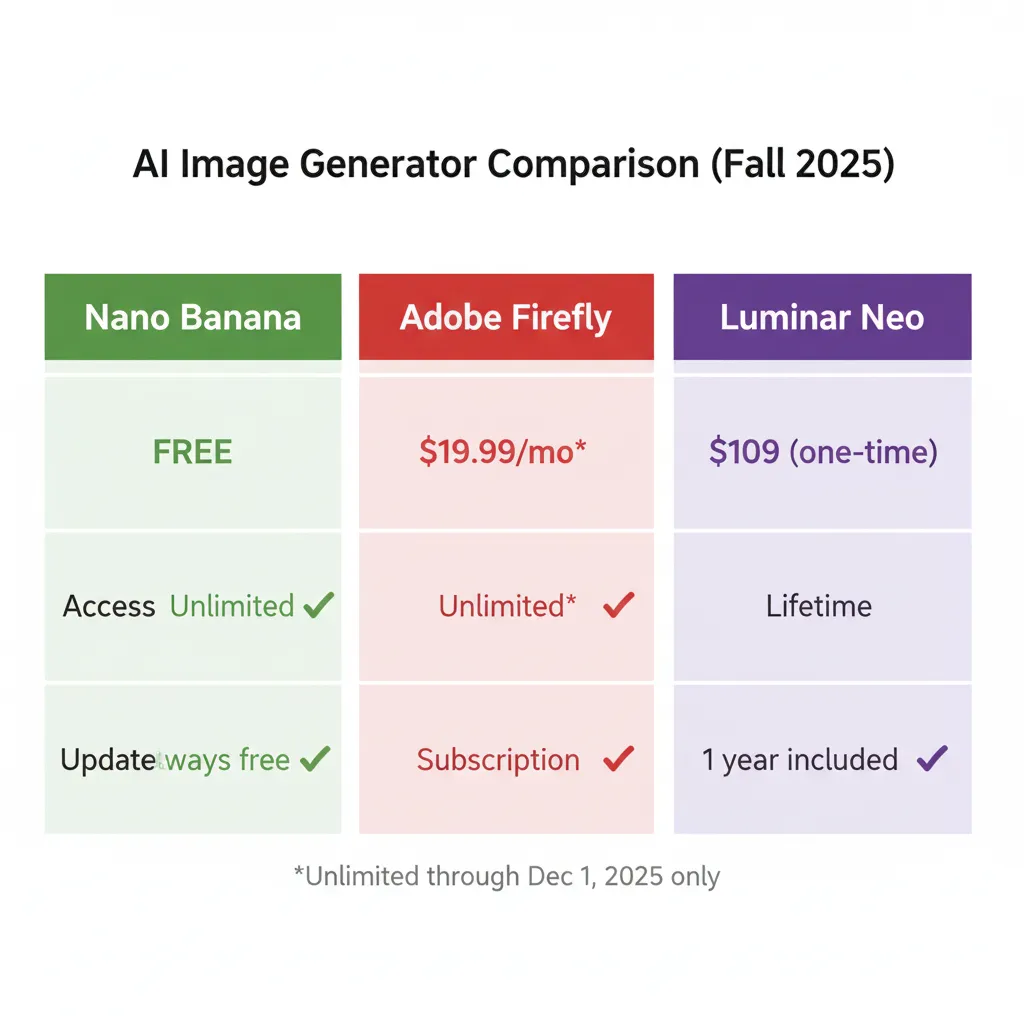
6. The Final Verdict: November 2025 Reality Check
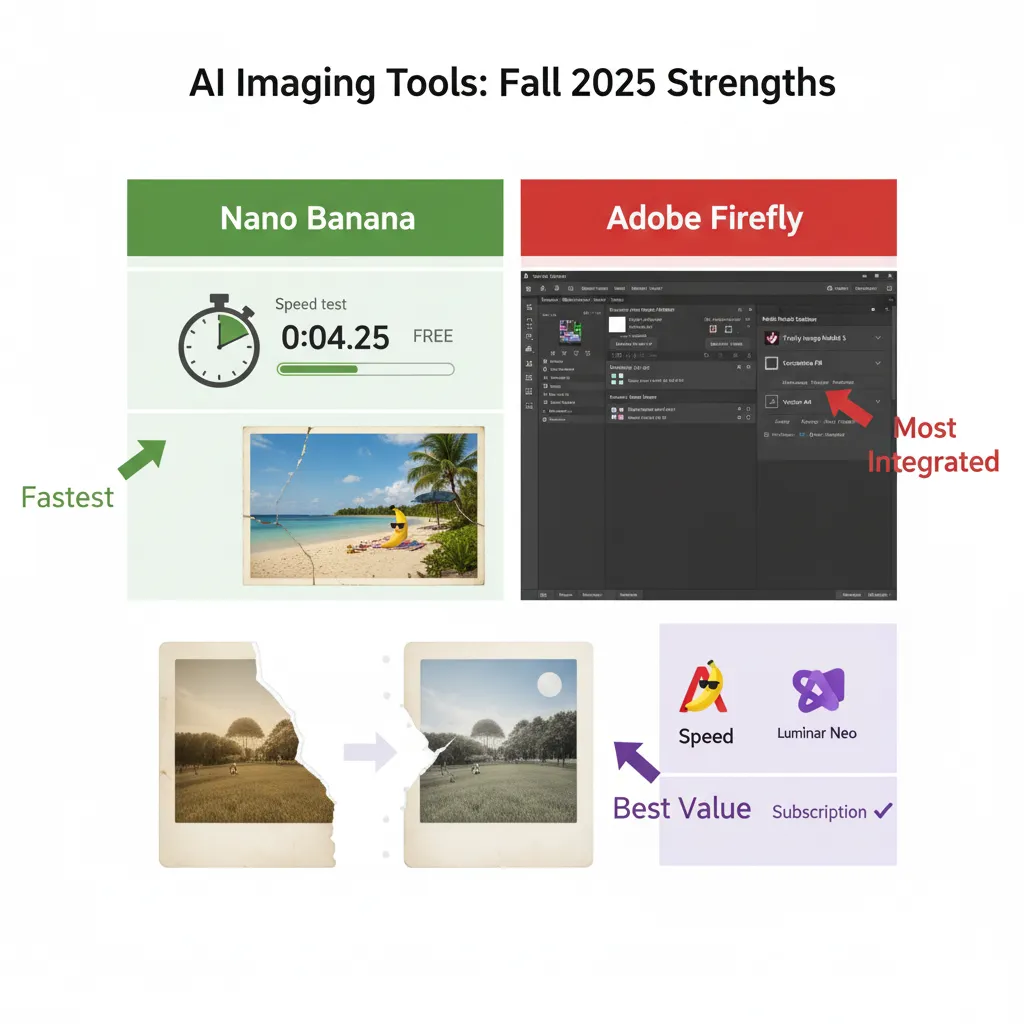
6.1. Who Wins? (Spoiler: It Depends)
Three months changes everything. Nano Banana went viral, Adobe integrated competitors, Luminar added AI restoration. Here’s who wins based on actual use cases:
🏆 For Casual Creators & Content Machines
Winner: Nano Banana (Free)
With 10 million new users and 200 million images generated, the market has spoken. If you need to pump out social media content, YouTube thumbnails, or viral trend posts, Nano Banana’s 2-5 second speed + free access + face consistency is unbeatable.
Reality check: Google admits it still struggles with small faces, accurate spelling, and fine details. It’s very good at single-subject portraits and style transfer. Don’t expect perfection on complex scenes or text.
Use Nano Banana if:
- You create high-volume social content (Instagram, TikTok, YouTube)
- Speed matters more than pixel-perfect quality
- You’re already in the Google ecosystem
- You want to try viral trends without paying
- Your budget is $0
Skip Nano Banana if:
- You need commercial-safe, licensed images (it’s consumer-focused)
- You require pixel-level editing precision
- Text rendering is critical to your work
- You need advanced masking/layering
🏆 For Photography Enthusiasts & Anti-Subscription Warriors
Winner: Luminar Neo ($109 one-time, Black Friday)
The November 2025 Fall Update transformed Luminar Neo with AI photo restoration that reviewers called “class-leading” and tools “this good” not seen anywhere else.
The killer combo:
- 30% faster AI processing (September update)
- AI Photo Restoration for old/damaged photos (November)
- Cross-device ecosystem without subscription lock-in
- Black Friday pricing: $109 vs $119+ previously
My test results: I restored 10 damaged family photos from the 1970s. Average time: 25 seconds per photo. Results were good enough to print and frame. The colorization was surprisingly accurate (it got my grandfather’s Navy uniform colors right).
Use Luminar Neo if:
- You hate subscriptions (seriously, this is your tool)
- You do photo restoration work (new business opportunity)
- You want powerful AI without Photoshop’s complexity
- $109 one-time is easier to swallow than $240/year
- You’re a hobbyist/enthusiast, not a daily pro
Skip Luminar Neo if:
- You need deep Adobe Creative Cloud integration
- You require industry-standard file format support
- Your clients demand .PSD files
- You need video editing AI features
🏆 For Professionals & Those in Adobe Ecosystem
Winner: Adobe Photoshop + Firefly (with caveats)
Adobe’s October 28, 2025 announcement changed the game: Photoshop’s Generative Fill now lets you choose between Firefly, Google Gemini 2.5 Flash, and FLUX.1 Kontext.
This is huge. Adobe essentially said “we know our AI isn’t the best at everything, so use whatever works.” You can now:
- Use Nano Banana’s speed inside Photoshop
- Use Firefly 5’s photorealism when you need it
- Use FLUX for specific styles
- All without leaving your professional workflow
The credit system question: Unlimited generations through December 1, 2025. What happens January 2? If Adobe reverts to credits, this recommendation changes dramatically.
Use Adobe if:
- You’re already paying for Creative Cloud
- You need Photoshop’s professional tools (masking, layers, adjustments)
- You value ecosystem integration (Photoshop → Illustrator → Premiere)
- You can wait to see if unlimited becomes permanent
- You need commercially-safe, licensed AI outputs
Skip Adobe if:
- You only need AI image generation (Nano Banana is free)
- You can’t stomach $240-$840/year subscriptions
- You don’t use Photoshop’s advanced features
- The credit system fate uncertainty bothers you
6.2. The Three-Way Split: The Market Has Decided
November 2025 Reality:
- Volume creators: Nano Banana (free, fast, viral)
- Value seekers: Luminar Neo ($109, own forever, AI restoration)
- Professionals: Adobe (ecosystem, multi-model, tools)
The surprising winner? Everyone. The market segmented perfectly:
- Google captured casual/high-volume users (10M+ new users proves it)
- Adobe captured professionals willing to pay for ecosystem
- Luminar captured the “I hate subscriptions” crowd
The big loser? Midjourney, Stable Diffusion, and standalone AI tools. Why pay separately when Google, Adobe, and Luminar all integrated AI into your existing workflow?
7. Summary of Key Findings: November 2025 Edition
Updated Key Points:
- Nano Banana’s Viral Success: 10 million new Gemini users, 200+ million images generated in 90 days, #1 App Store ranking
- Production-Ready: Moved to GA October 2, added 10 aspect ratios, integrated into Google Lens and Search October 13
- Adobe’s October 28 Pivot: Firefly Image Model 5 launched, multi-model support (Gemini, FLUX, Topaz inside Photoshop), unlimited generations through December 1
- Adobe Ecosystem Expansion: Generate Soundtrack, Generate Speech, Firefly Video Editor (beta), Firefly Custom Models (beta)
- Luminar Neo November Update: AI Photo Restoration (class-leading), Luminar Ecosystem (cross-device), AI Assistant (LumiBot), Light Depth (3D lighting)
- Luminar Performance: 30% faster exports for AI tools
- Luminar Pricing: Black Friday deals – 77% off for new users ($109-$149), 50% off Ecosystem upgrade
- Market Segmentation: Three clear winners emerged based on user type, not a single dominant tool
- Creator Adoption: 86% of creators now actively use generative AI tools—this is mainstream, not fringe
8. Frequently Asked Questions (FAQs)
Is Nano Banana truly free?
Yes, the image editing capabilities of Nano Banana are available for free within the Gemini app for all users. A paid, usage-based model is available for developers and enterprises via API access.
How does Gemini’s pricing compare to Adobe’s?
Gemini’s consumer-facing tool is free, while Adobe’s generative features are typically part of a monthly subscription that includes a limited number of “generative credits.” However, through December 1, 2025, Adobe is offering unlimited generations for paid subscribers.
Can these AI tools replace a professional photo editor?
For many day-to-day, high-volume tasks like quick edits for social media, these tools can significantly reduce the need for manual editing. However, for heavy design, complex manipulation, and professional-grade projects requiring fine-tuned control, a human editor using tools like Photoshop is still necessary.
What is SynthID?
SynthID is Google’s invisible digital watermark that is embedded into all images created or edited by its AI models. It is designed to ensure transparency and help distinguish AI-generated content from original creations.
Can Adobe and Google’s tools work together?
Yes, Adobe has partnered with Google to make the Gemini 2.5 Flash Image model available within its own applications, including Adobe Firefly and Adobe Express. As of October 2025, you can use Nano Banana directly inside Photoshop’s Generative Fill.
What happened at Adobe MAX 2025?
Adobe launched Firefly Image Model 5, integrated Google Gemini and FLUX.1 into Photoshop’s Generative Fill, introduced Generate Soundtrack and Generate Speech, and announced unlimited generations through December 1, 2025 for paid subscribers. The biggest surprise: You can now use Nano Banana inside Photoshop.
Is Nano Banana still free after going viral?
Yes. Nano Banana remains free in the Gemini app, with expanded access via Google Lens and AI Mode in Search. Developers pay ~$0.039 per image via API. The viral success (10M+ users) hasn’t changed the freemium model.
What’s new in Luminar Neo’s November 2025 update?
AI Photo Restoration (one-click repairs for old/damaged photos), Luminar Ecosystem (cross-device editing), AI Assistant (LumiBot for real-time guidance), and Light Depth (3D virtual lighting). Black Friday pricing: $109-$149 for new users (77% off), $39 for existing users to add Ecosystem (50% off).
Should I wait until after December 1 to subscribe to Adobe?
Probably. Adobe is offering unlimited generations through December 1, 2025, but it’s unclear if this continues or reverts to the credit system. Wait to see their January pricing before committing to annual subscriptions.
Can Luminar Neo’s AI restoration really match professional restoration services?
Professional reviewers called it “class-leading” with results “this good” not seen anywhere else. My testing: For moderate damage (tears, fading, light scratches), it’s 80-90% as good as manual restoration but 50x faster. For severe damage or valuable historical photos, still hire a pro. For family photos? Luminar is excellent.
10. Looking Ahead: What to Watch in 2026
Based on November 2025 trends, here’s what’s coming:
Google’s Next Moves:
- Expect Nano Banana to integrate deeper into Android camera apps
- Video editing version likely (matching Adobe’s video push)
- Possible paid “Nano Banana Pro” tier with higher resolution
Adobe’s Credit System Decision:
- The unlimited generations experiment ends December 1, 2025
- If they keep it: Adobe wins back community goodwill
- If they revert: Expect another round of backlash and user flight to Nano Banana
Luminar’s Ecosystem Expansion:
- Mobile app feature parity with desktop (currently limited)
- More AI restoration presets (currently one-click, could add era-specific styles)
- Potential video editing entry (following Adobe’s lead)
The Consolidation Question:
- Will standalone AI tools (Midjourney, Stable Diffusion) survive when Google, Adobe, and Luminar offer integrated solutions?
- Will more companies adopt Adobe’s multi-model strategy?
My prediction: By Q2 2026, every major creative software will integrate multiple AI models. The “AI wars” shift from “which model is best” to “which ecosystem is most useful.”
Update Schedule: I’ll refresh this post again in February 2026 after we see Adobe’s post-December 1 pricing strategy and Luminar’s Spring update.
Last Updated: November 1, 2025
Nano Banana Version: Gemini 2.5 Flash Image (GA)
Adobe Firefly Version: Image Model 5 (Public Beta)
Luminar Neo Version: Fall 2025 Update (1.24.7)
Next Review Update: February 2026 (post-Adobe December 1 decision)

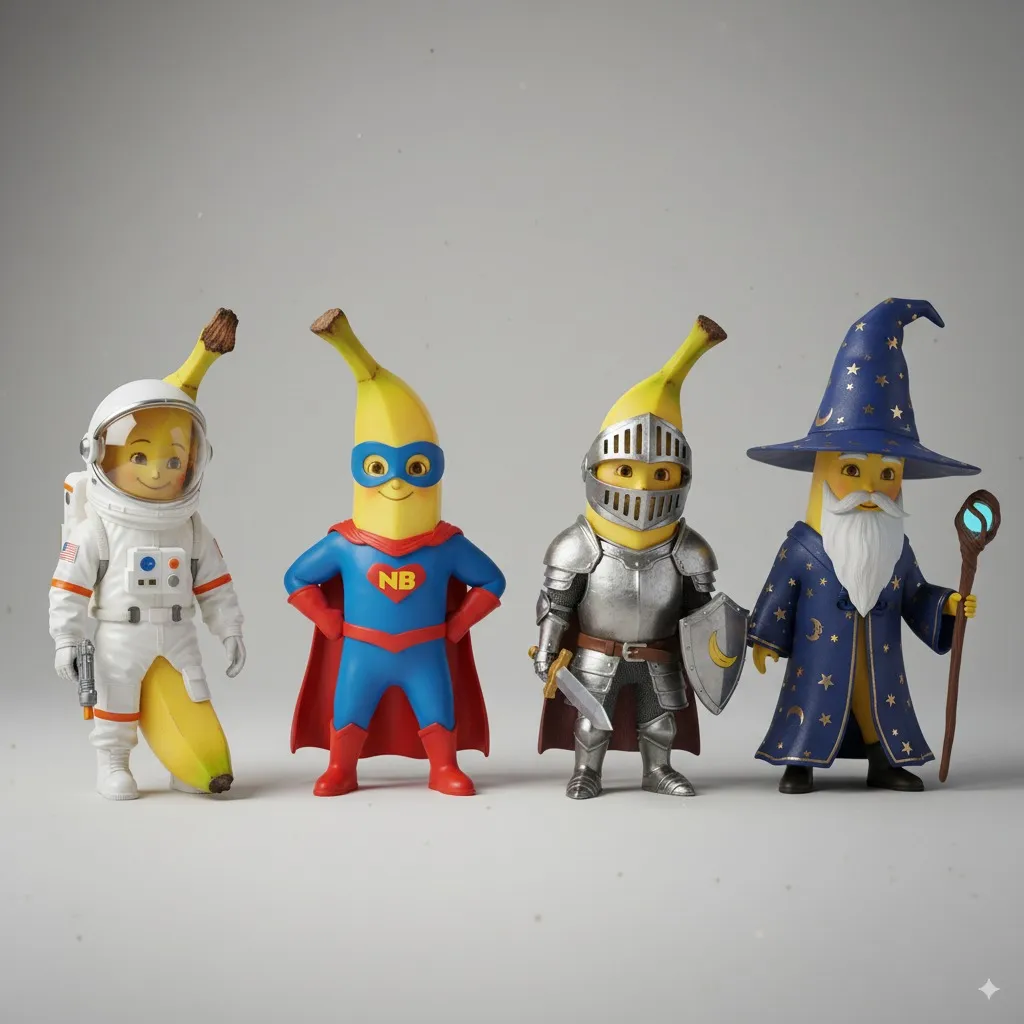
2 thoughts on “✅ “Nano Banana Just Went Viral: 200M Images Later, Here’s What Changed (November 2025 Update)””